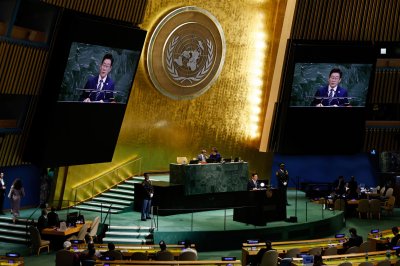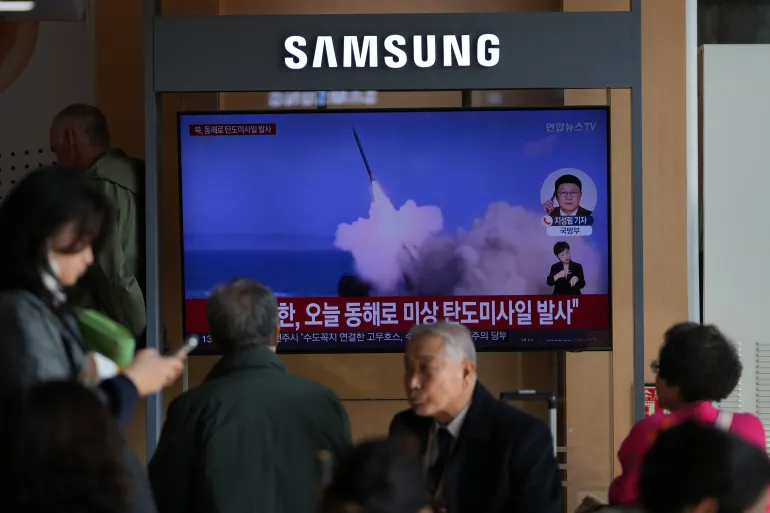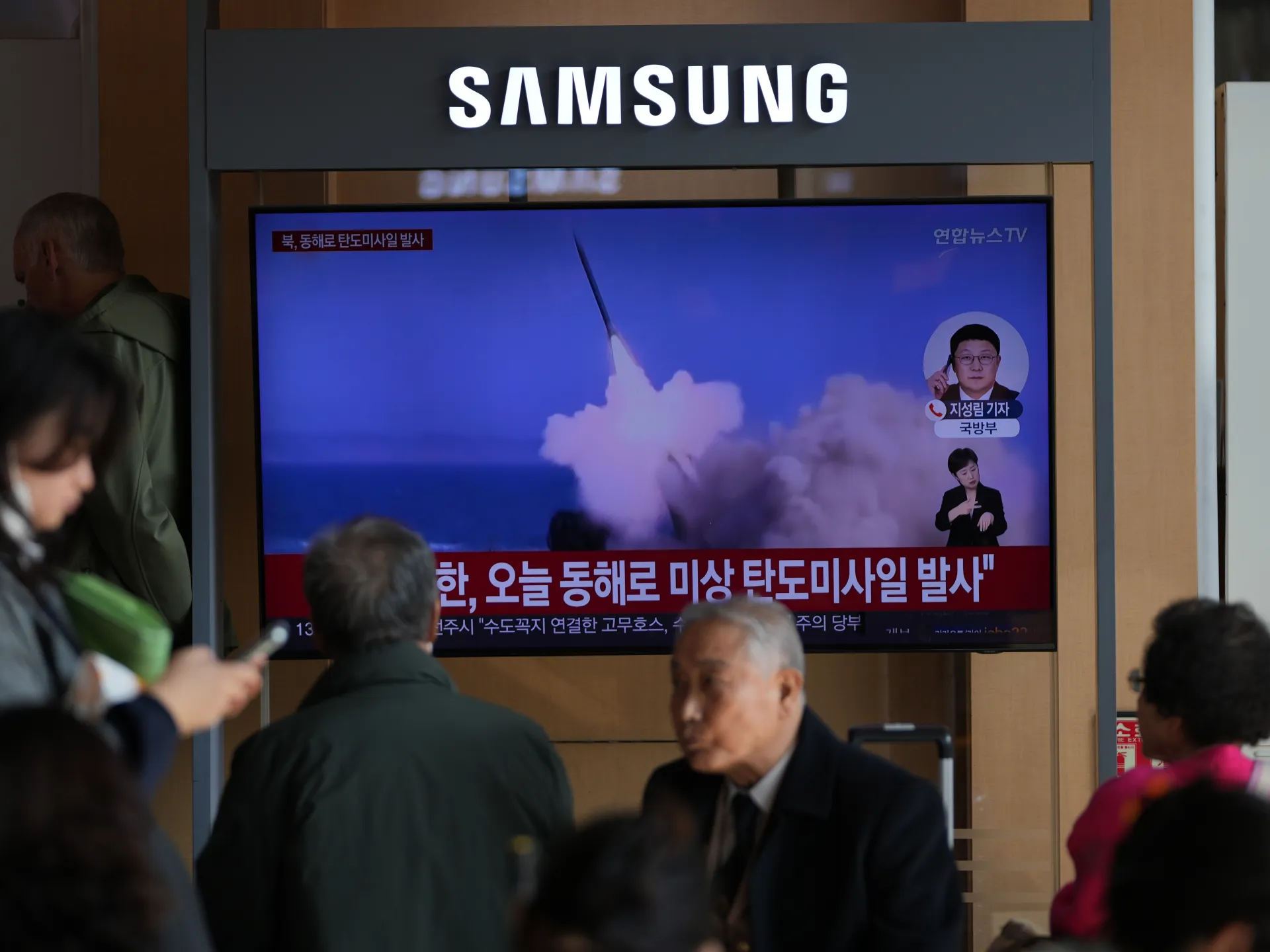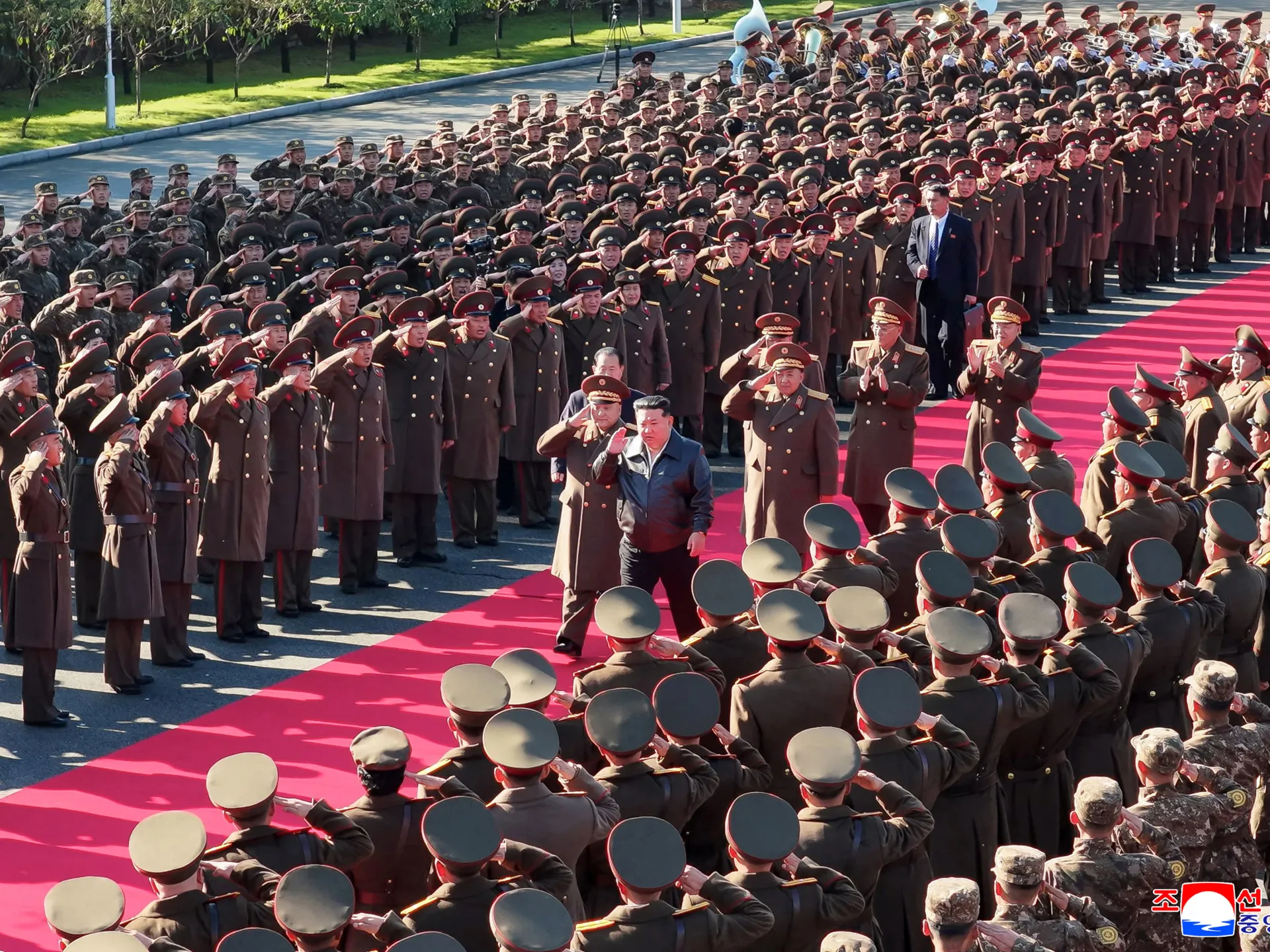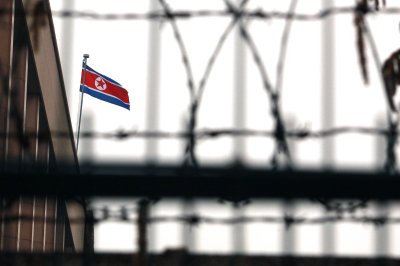U.S. approves South Korean nuclear submarine program in finalized trade deal

The United States and South Korea on Friday released a joint fact sheet on a sweeping trade and security agreement that includes the approval of Seoul’s nuclear submarine program. The deal was struck during U.S. President Donald Trump’s (L) meeting with South Korean President Lee Jae Myung at the APEC summit in Gyeongju in October. Photo by Yonhap
SEOUL, Nov. 14 (UPI) — The United States and South Korea on Friday released a joint fact sheet on a sweeping trade and security agreement that details a $350 billion investment pledge by Seoul and confirms Washington’s approval for its Asian ally to develop nuclear-powered submarines.
The document comes two weeks after U.S. President Donald Trump and South Korean President Lee Jae Myung finalized their trade negotiations on the sidelines of the Asia-Pacific Economic Cooperation forum in Gyeongju on Oct. 29.
“With this, the Korea-U.S. trade and security negotiations, which have been one of the greatest variables affecting our economy and security, have finally been concluded,” Lee said in a televised press briefing and Facebook post on Friday.
Lee expressed “gratitude and respect” for Trump’s decision and said both sides “achieved the best possible outcome, based on common sense and reason.”
Under the terms of the deal, Trump’s so-called “reciprocal” tariffs on South Korean goods, including automobiles, will drop from 25% to 15%, returning to the level initially established in July during Lee’s visit to the White House.
In exchange for the lower tariffs, South Korea has pledged to invest $350 billion in the United States, including $150 billion in the U.S. shipbuilding sector and $200 billion for strategic sectors under a memorandum of understanding to be signed by the two countries.
To minimize the impact on South Korea’s foreign exchange market, Seoul’s annual investment cap was set at $20 billion, the fact sheet said.
“The two governments confirmed that Korea’s investments will proceed only within a level our economy can fully sustain and only in commercially viable projects,” Lee said. “The mistrust and concerns of some who were worried this was a ‘de facto grant’ under the guise of investment in projects with difficult returns have been completely dispelled.”
The fact sheet also formalized Washington’s approval for Seoul’s plan to build nuclear-powered submarines, a capability South Korean leaders have pursued for years. Seoul has framed nuclear-powered vessels as essential for tracking North Korean ballistic missile submarines and for expanding its reach across the Indo-Pacific. Officials also see the program as a catalyst for the country’s nuclear energy and naval shipbuilding industries.
The agreement said Washington will work with Seoul to define requirements for the project, “including avenues to source fuel.” Securing enriched uranium for submarine reactors had been a sticking point in the release of the fact sheet, as Seoul has sought revisions to its bilateral nuclear cooperation pact to allow greater flexibility in enrichment and nuclear waste recycling.
Lee called the submarines “a decades-old dream of South Korea and a vital strategic asset for peace and stability on the Korean Peninsula.”
The agreement comes as Washington and Seoul undertake a broader effort to modernize their security alliance and reshape how the two countries share military responsibilities. The fact sheet noted that South Korea intends to raise defense spending to 3.5% of GDP “as soon as possible,” and reiterated a commitment to the eventual transition of wartime operational control to Seoul.
Seoul also pledged to spend $25 billion on U.S. military equipment purchases by 2030 and outlined plans to provide comprehensive support for U.S. Forces Korea amounting to $33 billion.
“The South Korea-U.S. alliance has evolved and deepened into a truly future-oriented strategic comprehensive alliance encompassing security, the economy, and cutting-edge technology,” Lee said.
As part of that broader strategic framework, the two governments reaffirmed their shared goal of a denuclearized Korean Peninsula and pledged to work together to implement the joint statement of the 2018 Singapore summit between Trump and North Korean leader Kim Jong Un.
The fact sheet called on North Korea to “return to meaningful dialogue and abide by its international obligations, including by abandoning its weapons of mass destruction and ballistic missile programs.”
North Korea has rejected calls for denuclearization since declaring itself a nuclear-armed state in 2022. In September, Kim signaled a willingness to resume diplomacy with Washington but warned that any discussion of giving up his regime’s nuclear arsenal would be off the table.

